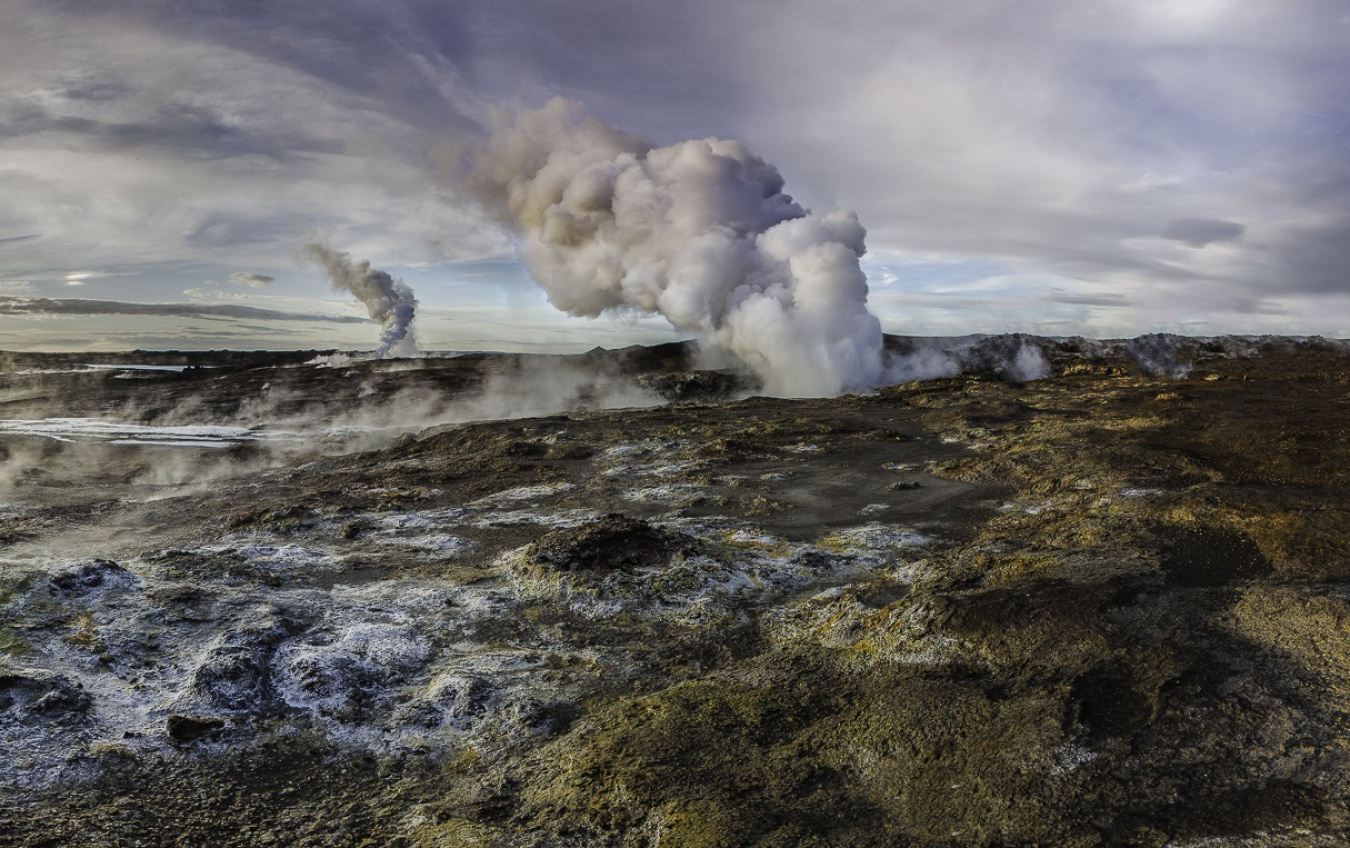The Office of Geothermal (OG) assesses possible environmental impacts of geothermal energy, such as those associated with water use, air quality, and induced seismicity.
Water Use
Water-use impacts for power plants vary based on the fuel, power plant type, and cooling system used. OG's 2019 GeoVision analysis evaluates the potential to significantly expand electricity-generating geothermal energy and the associated impacts of that growth. This includes assessing operational water-use impacts for the electric sector. Under the GeoVision’s Technology Improvement scenario, geothermal energy could represent 8.5% of total national electricity generation by 2050 while being accountable for only 1.1% of power-sector water withdrawals and 7.6% of total power-sector water consumption.1
The GeoVision primary analysis did not restrict future geothermal deployment based on water quality—that is, whether water was from freshwater or non-freshwater sources. Additional GeoVision sensitivity analyses limiting geothermal water use to non-freshwater sources (e.g., municipal wastewater) determined that the majority of future deployment could be supported using non-freshwater sources.
For more, visit the GeoVision analysis report and the GeoVision Analysis Supporting Task Force Report: Impacts, as well as 2013 and 2014 OG-funded publications on geothermal life cycle water use.
Air Quality
Geothermal energy is a reliable, renewable resource. Using geothermal energy for electricity produces only about one-sixth of the carbon dioxide of a natural gas power plant, and little—if any—nitrous oxide or sulfur dioxide. Binary-cycle geothermal plants, which operate in a closed cycle, release essentially zero emissions.
The GeoVision analysis assessed the impact of increased geothermal deployment on air emissions, including greenhouse gas (GHG) emissions, measured as carbon-dioxide equivalents (CO2e), as well as sulfur dioxide (SO2), nitrogen oxides (NOx), and fine particulate matter (PM2.5). Assuming the most aggressive technology improvements modeled for both the electric and non-electric sectors, the overall results of the GeoVision analysis indicate that—by 2050—geothermal deployment could avoid annual GHG emissions equivalent to removing a total of about 26 million cars from U.S. roads. Results also demonstrate significant improvements in SO2, NOx, and PM2.5 emissions resulting from increased geothermal deployment.
For more, visit the GeoVision analysis report and the GeoVision Analysis Supporting Task Force Report: Impacts.
Induced Seismicity
Movement of fluids into or out of any well (i.e., water, oil and gas, geothermal) can induce or trigger some level of seismic or microseismic activity. The extent and magnitude of that activity and its proximity to property and people determines the level of potential risk.
The United States has demonstrated leadership in this area with a mitigation protocol developed by the U.S. Department of Energy to address induced seismicity from enhanced geothermal systems (EGS). All OG-funded projects are required to follow this protocol. OG also funds efforts to ensure effective seismic monitoring as EGS expands, such as the Geothermal Geophone Prize.
Other Environmental Impacts
Like all electricity-generation projects, geothermal power plants are subject to environmental review under the National Environmental Policy Act, as well as other regulatory requirements. Learn more on our Permitting for Geothermal Power Development Projects page.
1 Water withdrawal is water removed or diverted from a water source for use, and water consumption is water evaporated, transpired, or incorporated into products or crops or otherwise removed from the immediate water environment.


